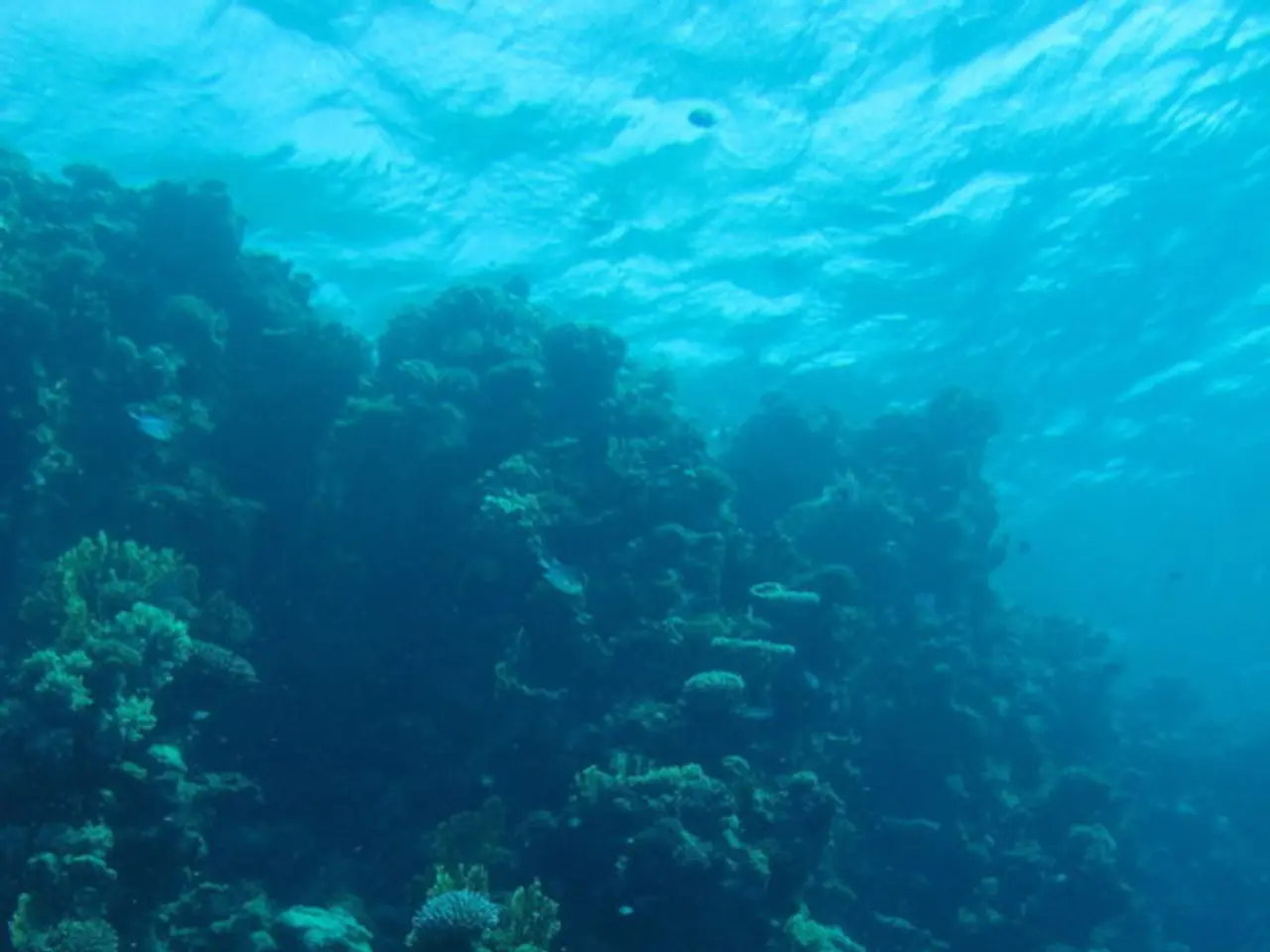Researchers detail deep-sea life forms, including worms and mollusks, at approximately 9 kilometers below the ocean surface
In a groundbreaking discovery, a team of international scientists, including researchers from New Zealand, China, Russia, and Denmark, have found thriving communities of marine organisms at depths nearly 10 kilometers below the ocean surface. This remarkable find was made in the northwest Pacific Ocean, near the site of the recent Kamchatka earthquake, and was reported in the journal Nature.
The organisms discovered are communities of marine worms, known as Siboglinid polychaetes, and ancestral bivalve mollusks. These organisms have adapted to produce energy through hydrogen sulfide and methane, a process known as chemosynthesis, as they do not receive sunlight for photosynthesis.
The discovery of this "flourishing chemosynthetic life" in the western Aleutian Trench was unexpected, as researchers thought it was unthinkable to find these organisms at such extreme depths. The Pacific plate slides under the North American plate along the western Aleutian Trench, and the complex carbon cycle in the deep ocean is impacted by the existence of these chemosynthetic communities.
Methane is produced through microbial processes in the organic matter found in the sediments in the faults that cross deep sedimentary layers in the marine trenches. The scientists responsible for the discovery believe that these findings challenge current and conceptual models of how life could be at extreme limits and provide a new vision of how the carbon cycle is carried out in the deep ocean.
The expedition was conducted near the epicenter of the recent major earthquake that occurred in the Kamchatka Peninsula, using the Chinese manned submersible named Fendouzhe. The submersible covered more than 2,500 kilometers of surface along both the Kurile and the western Aleutian trenches, with depths ranging from 5,800 to 9,533 meters.
Given the geological similarities with other hadal trenches, these communities of worms and mollusks based on chemosynthesis could be more widespread than previously thought. The Kurile Trench, one of the deepest depressions on the planet, located east of the Kurile Islands, the Japanese island of Hokkaido, and Kamchatka, could potentially host similar ecosystems.
The presence of these chemosynthetic ecosystems of worms and mollusks challenges long-held assumptions about the potential for life at extreme depths in the ocean. The scientists believe that these findings could have significant implications for our understanding of the deep ocean and its role in the global carbon cycle.
Read also:
- Understanding Hemorrhagic Gastroenteritis: Key Facts
- Stopping Osteoporosis Treatment: Timeline Considerations
- Tobacco industry's suggested changes on a legislative modification are disregarded by health journalists
- Expanded Community Health Involvement by CK Birla Hospitals, Jaipur, Maintained Through Consistent Outreach Programs Across Rajasthan








